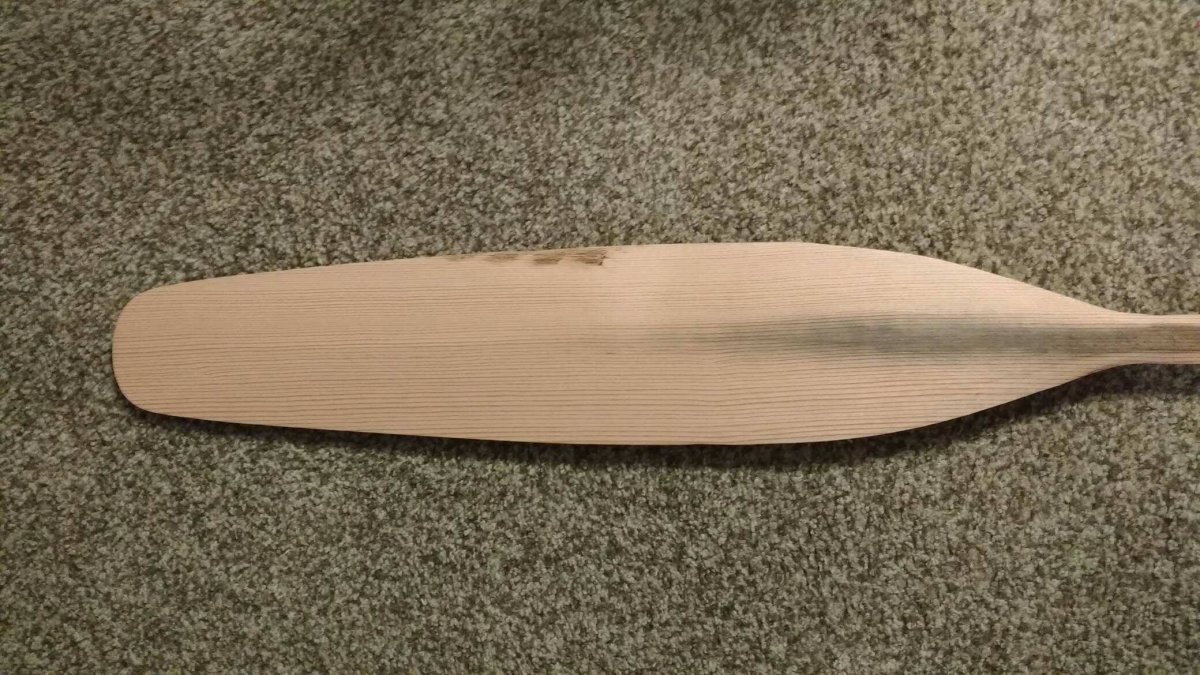Hi there,
I'm relatively new to carving paddles, and picked a piece of cherry that had some mill marks on it at regular intervals. I assumed that they were superficial, but after carving into the wood, I found that there are 2cm deep cracks along a 13cm stretch of the blade. Would it be best to...
1. Try to clear out the crushed wood, and then fill the space with a marine epoxy.
2. Ignore it, leave the blade thicker than planned, seal it with spar varnish, and only use it for casual paddling.
3. Carve only on the cracked face until the desired thickness is reached (it is still pretty thick) and then seal it.
Thank you for your help!
I'm relatively new to carving paddles, and picked a piece of cherry that had some mill marks on it at regular intervals. I assumed that they were superficial, but after carving into the wood, I found that there are 2cm deep cracks along a 13cm stretch of the blade. Would it be best to...
1. Try to clear out the crushed wood, and then fill the space with a marine epoxy.
2. Ignore it, leave the blade thicker than planned, seal it with spar varnish, and only use it for casual paddling.
3. Carve only on the cracked face until the desired thickness is reached (it is still pretty thick) and then seal it.
Thank you for your help!



